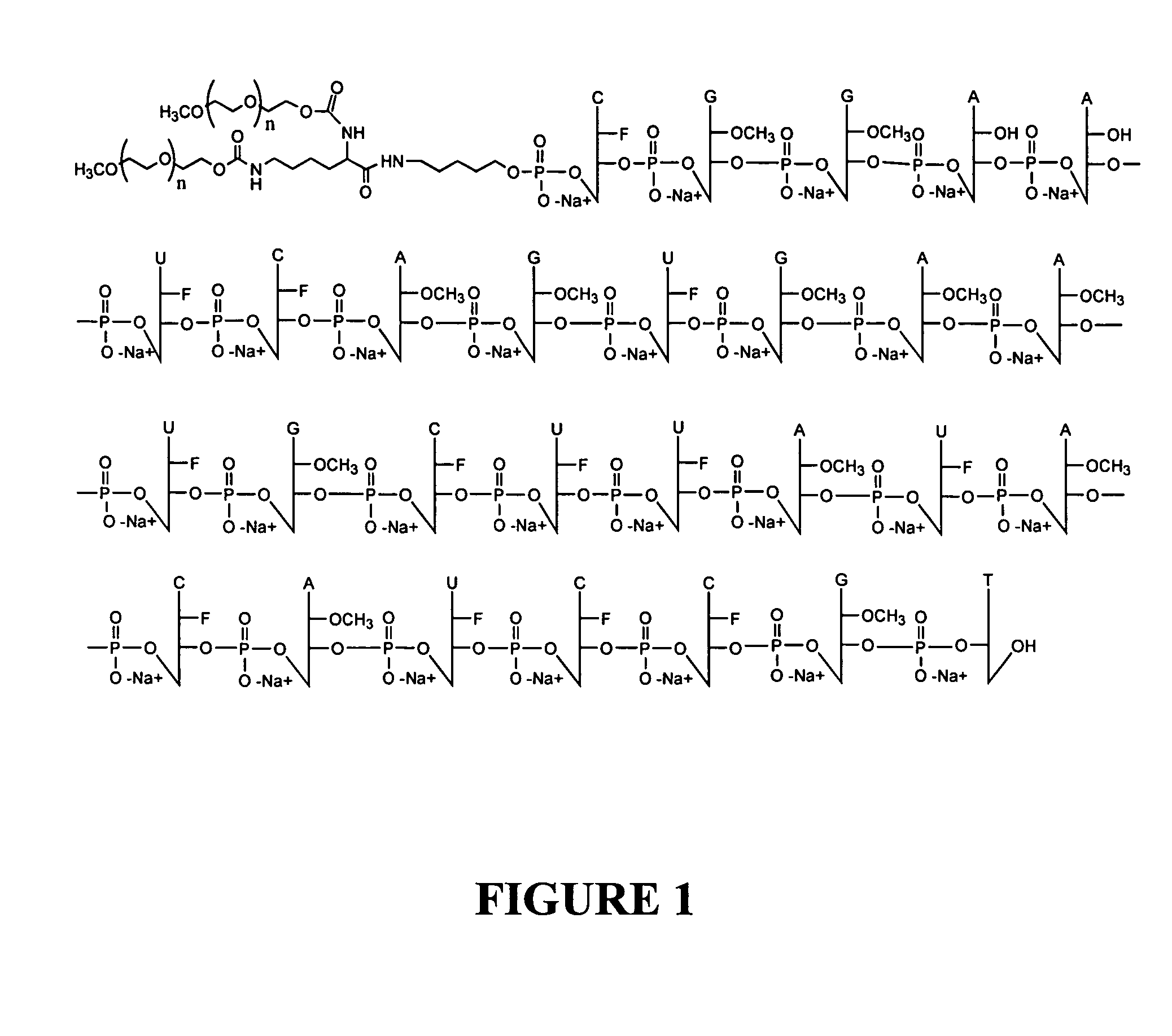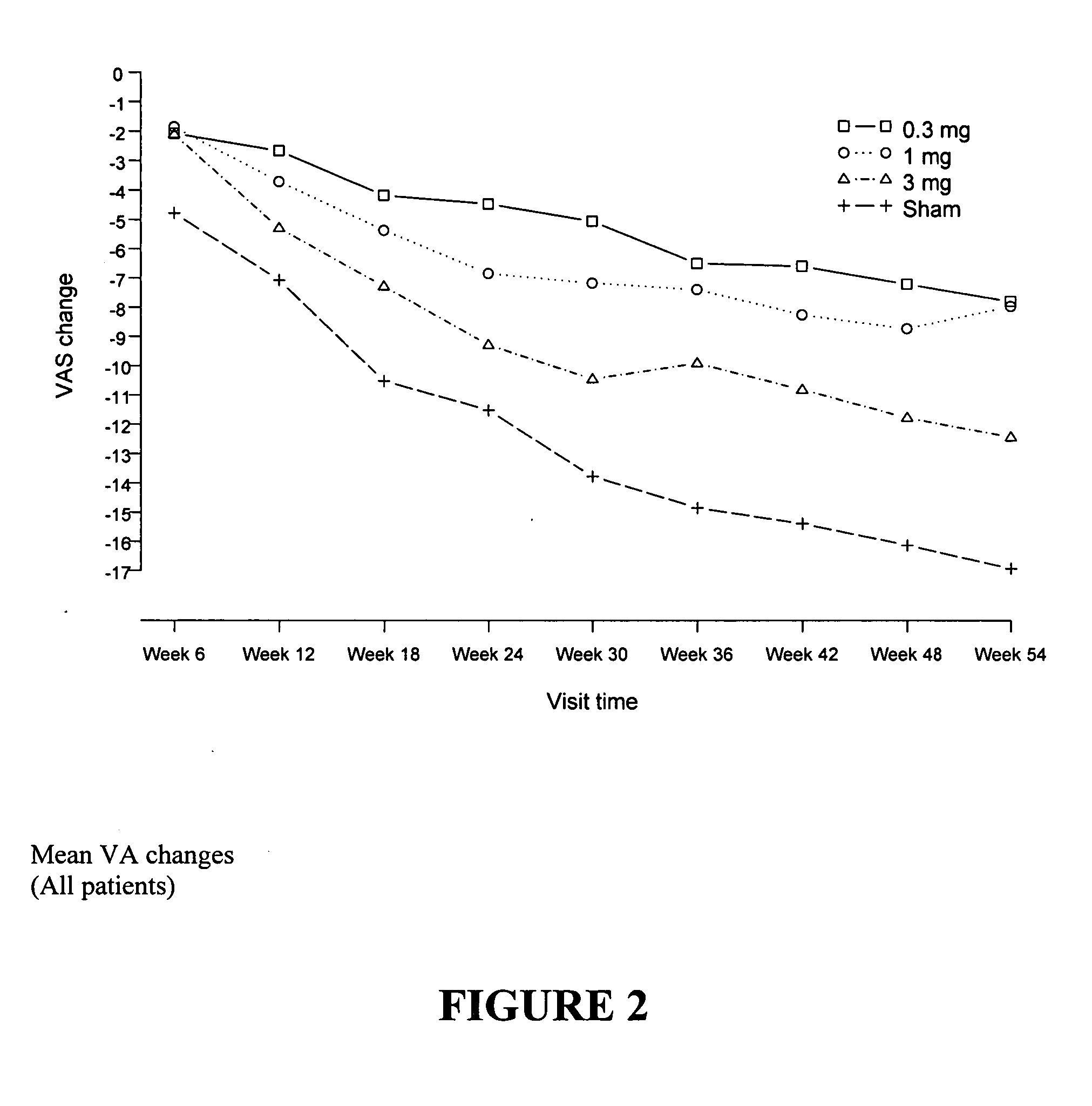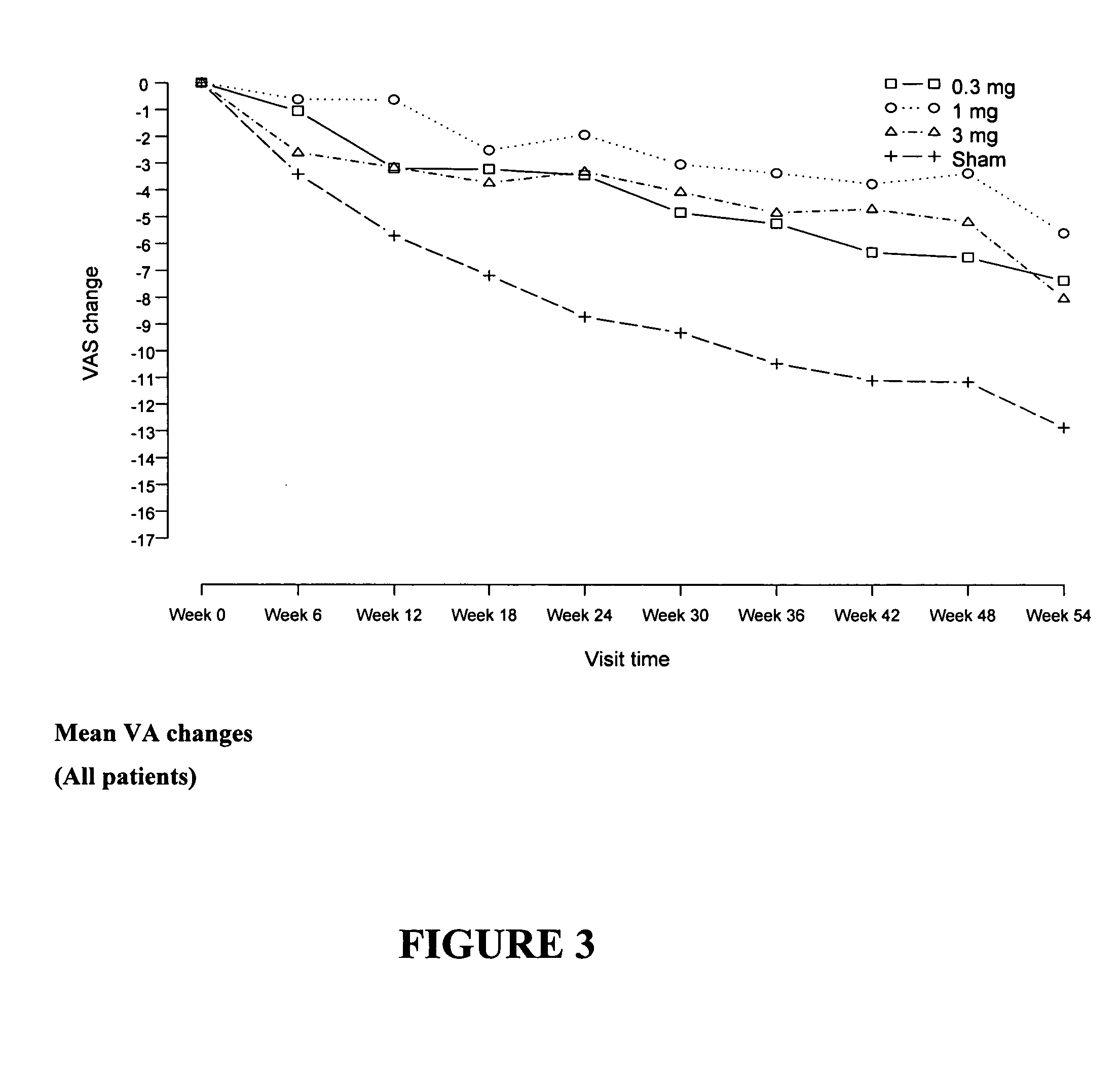Methods and compositions for treating macular degeneration
- Summary
- Abstract
- Description
- Claims
- Application Information
AI Technical Summary
Benefits of technology
Problems solved by technology
Method used
Image
Examples
example 1
We performed a multi-centered, open-label, dose-escalation study of a single intravitreous injection of EYE001 in patients with subfoveal CNV secondary to age-related macular degeneration and with a visual acuity worse than 20 / 200 on the ETDRS chart. The starting dose was 0.25 mg injected once intravitreously. Dosages of 0.5, 1, 2 and 3 mg were also tested. Complete ophthalmic examination with fundus photography and fluorescein angiography was performed. A total of 15 patients were treated.
Selection Criteria.
Patients for the study were selected using the following inclusion and exclusion criteria:
Inclusion Criteria: Patients were required to be >50 years and in generally good health, have a best corrected visual acuity in the study eye worse than 20 / 200 on the ETDRS chart, and 20 / 400 or worse for at least the first patient of each cohort (n=3); best corrected visual acuity in the fellow eye equal to or better than 20 / 64; subfoveal CNV (classic and / or occult CNV) of >3.5 Macul...
example 2
We conducted a multi-center, open-label, repeat dose Phase IB study of 3 mg / eye of pegaptanib sodium (EYE001, an anti-VEGF aptamer) in patients with subfoveal CNV secondary to AMD with a visual acuity worse than 20 / 100 in the study eye and better or equal to 20 / 400 in the fellow eye. If 3 or more patients experienced Dose-Limiting Toxicity (DLT's), the dose was reduced to 2 mg and then 1 mg, if necessary. The intended number of patients to be treated was 20; 10 patients with the anti-VEGF aptamer alone and 10 patients with both anti-VEGF therapy and PDT. Eleven sites in the U.S. were selected for the studies.
Selection Criteria.
Patients for the study were selected using the following inclusion and exclusion criteria:
Inclusion Criteria: The ophthalmic criteria included best corrected visual acuity in the study eye worse than 20 / 100 on the ETDRS chart, best corrected visual acuity in the fellow eye equal to or better than 20 / 400, subfoveal choroidal neovascularization with activ...
example 3
Pegaptanib sodium drug substance, a pegylated (40 kD) anti-VEGF aptamer (the anti-VEGF pegylated aptamer EYE001) was used. As discussed above, this aptamer is a polyethylene glycol (PEG)-conjugated oligonucleotide that binds to the major soluble human VEGF isoform with high specificity and affinity. The aptamer binds and inactivates VEGF in a manner similar to that of a high-affinity antibody directed towards VEGF.
The pegylated pegaptanib sodium drug substance was formulated in phosphate buffered saline at pH 5-7. Sodium hydroxide or hydrocholoric acid was added for pH adjustment.
The aptamer was formulated as 0.3, 1.0 and 3 mg / 100 μl and packaged in a sterile 1 ml USP Type I graduated glass syringe fitted with a sterile 27 gauge needle. The syringe contents were allowed to reach room temperature before use and subsequently administered as a 100 μl intravitreal injection every 6 weeks for 54 weeks.
Patients were randomized to one of 4 treatment groups (0.3 mg pegaptanib sodium / ...
PUM
 Login to View More
Login to View More Abstract
Description
Claims
Application Information
 Login to View More
Login to View More - R&D
- Intellectual Property
- Life Sciences
- Materials
- Tech Scout
- Unparalleled Data Quality
- Higher Quality Content
- 60% Fewer Hallucinations
Browse by: Latest US Patents, China's latest patents, Technical Efficacy Thesaurus, Application Domain, Technology Topic, Popular Technical Reports.
© 2025 PatSnap. All rights reserved.Legal|Privacy policy|Modern Slavery Act Transparency Statement|Sitemap|About US| Contact US: help@patsnap.com



